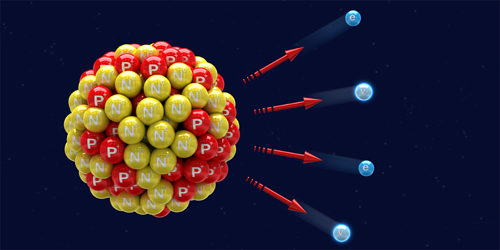Search Continues for Neutrinoless Decay
Unlike other fermions in the standard model, neutrinos are incredibly light and seem to all have the same chirality. These peculiarities can be explained if neutrinos are so-called Majorana particles—that is, if they are their own antiparticles. A telltale sign of Majorana neutrinos would be a radioactive decay known as neutrinoless double-beta decay, but this process has yet to be seen. Now the AMoRE Collaboration has achieved the most stringent limit to date on the neutrinoless double-beta decay of molybdenum nuclei [1]. This result places strong bounds on the potential properties of Majorana neutrinos.
In regular double-beta decay, two neutrons in a nucleus simultaneously transform into two protons, releasing two electrons and two neutrinos. If neutrinos are Majorana particles, another kind of double-beta decay is allowed, in which only the electrons are emitted. Scientists have looked for evidence of neutrinoless double-beta decay for more than seven decades, using nuclei ranging from calcium-48 to neodymium-150.
The AMoRE Collaboration investigated crystals containing 3 kg of molybdenum-100 at the Yangyang Underground Laboratory in South Korea. For over two years, the researchers measured the energies of electrons emitted from the decays of these nuclei. Compared with electrons emitted by regular double-beta decay, those emitted by the neutrinoless process should have additional total energy, amounting to that of the missing neutrinos. The team found that all the measurements were consistent with regular double-beta decay. This finding allowed the researchers to set a lower limit on the half-life of the neutrinoless process: They calculated that it would take at least 2.9 × 1024 years for half of the molybdenum atoms to decay in this way. Although this half-life is 200 trillion times the age of the Universe, the AMoRE Collaboration hopes that the decay will be found by an upgraded version of the experiment, which will use 100 kg of molybdenum-100 and span five years.
–Ryan Wilkinson
Ryan Wilkinson is a Corresponding Editor for Physics Magazine based in Durham, UK.
References
- A. Agrawal et al. (AMoRE Collaboration), “Improved limit on neutrinoless double beta decay of 100Mo from AMoRE-I,” Phys. Rev. Lett. 134, 082501 (2025).




